Overview
Nature allows us to inspire great things from them. In 1989 Japan’s Bullet train runs at the speed of reaching 170 miles per hour. It creates a serious problem when it reaches the tunnel.
While reaching the tunnel the train pushes the atmospheric pressure waves which created a huge sound that could hear even 400 meters away.
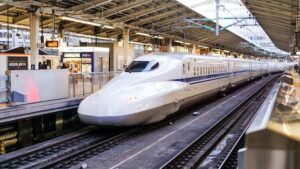
Solution
This creates a huge problem in a residential area. An engineering team has been brought up to resolve this issue. Here comes a key engineer named Eiji Nakatsu the general manager of technical development. He was a curious bird watcher.
The modified bullet train was redesigned using specific characteristics and shapes of the different birds.
Pantograph
This was the element known as the rig that connects the train and the electric cable. It was inspired by the owl. The serration and curvature in the owl’s feathers allow them to swoop silently to catch its prey. This was typically mimicked by Nikatsu and implemented in the train’s pantograph curvature design.
Penguin has a smooth and seamless body that allows them to swim most efficiently. This inspired the pantograph’s supporting shaft. Due to this, the wind resistance will be lowered consecutively.
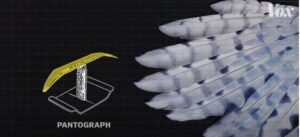
Body
We all came up with the kingfisher’s method of catching prey and its unique peak. Engineers test various train nose-shaped bullets in different shapes down the pipe to measure the pressure waves and put them in water to measure splash size.
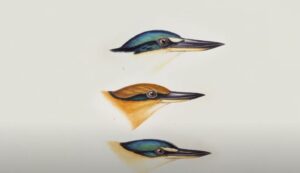
The bullet nose that was similar to the kingfisher’s nose provided quite interesting results.
With all these changes the bullet train was relaunched in 1997, Surprisingly the new one was 105 faster than the old train, consumed 15% less electricity than the old one, and importantly stayed under 70 dB in residential areas.
The method of designing the bullet train with the wings of the owl, the belly of the penguin, and the nose of the kingfisher is known as Biomimicry.
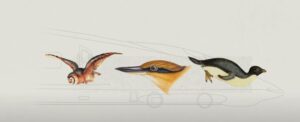
Biomimicry
Janine Benyu, the founder of the Biomimicry Institute wrote the book named Biomimicry in 1997. This book describes the story of innovations in computing energy and health in which the structures are inspired by the natural world.
Her words “ Stick like a Gecko, Compute like a Cell, Run a business like a Redwood Forest” will make sense. She worked as a consultant in several top leading companies and suggested how to mimic design ideas from nature.
- Like mimicking prairie dog burrows to build better air ventilation systems
- Mimicking shark skin patterns to design bacteria-resistant plastic surfaces used in hospitals.
- Then arranging wind turbines in the same pattern that fish swim in.
From her point of view, many would get benefit by looking at the world.

Biomimicry Process
As per Benyu, there are three ways to mimic nature.
- Shape
- Process
- Ecosystem
Shape
The first way is to mimic the shape of nature. Examples of mimicking the shape are
- We can create a paint that dries and form a structure we want to mimic nature when it dries. ie. we can make paint with the physical structure of lotus leaves. If you apply it to your car you can remove dirt as well as rainwater.
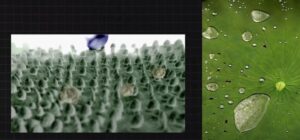
Process
The second way is to mimic the process from nature. Examples of mimicking the process are
- The communication system of ants to find the source of food and a place to live. This same thing has been got mimicked in automated car systems.
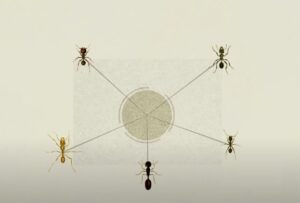
Ecosystem
The third way to mimic nature is through the ecosystem. Examples of mimicking ecosystems are
- In Industries we have gone through the byproduct lifecycle. When one product’s lifecycle ends it must be converted into another product. In the ecosystem, food chain management resembles this process.
Biomimicry Products
1. Wind Turbines
The two-fin wind turbine is also one of the bio-mimicking products. It was inspired by humpback whales. This results in the improvisation of wind turbines.
2. Harare Buildings
Eastgate Buildings in Zimbabwe mimicks Termites. It was a naturally formed thing for ventilation. Here the fresh air will suck in and the warm air will suck out due to its design which will reduce the temperature reducing cost.
3. Mercedes
Mercedes try to mimic the box fish shape in their car design. But the car design when added with wheels it becomes difficult to steer. So Mercedes drops this design.
4. Flights
The most common thing we encounter in daily life is airplanes. It mimics the bird structure. As it replicates the bird’s structure it works as same as the bird.
5. Hydrophobia
Hydrophobia is a designed nanostructure that resists water molecules. It helps to protect the surface from sticking dirt particles. Hydrophobia was inspired by the lotus leaf. Lotus exhibits this hydrophobic property due to its nanostructure in its leaf.
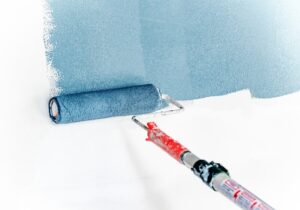
Some other Biomimicry products are
- NASA’s Ribtes film from shark dense shark pattern.
- Birds Safe Glass from spider’s UV reflection stand from spider’s web
- Swimsuit is also one of the profitable and useful products designed from shark skin patterns.
- The velcro strap found in shoes was mimicked from Burr
- The water collector was inspired by the Beetle water protection system in the Beetle’s skin.
Finally, the people who try to design should learn from nature by looking deeply into it.
1. To know more about Bionic car click on the below video
2. To know about biomimicry architecture click on the below video
3. Hear Janine benyus speech to learn more about biomimicry nature.

